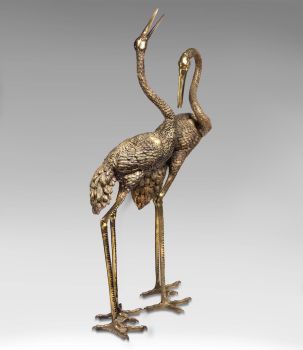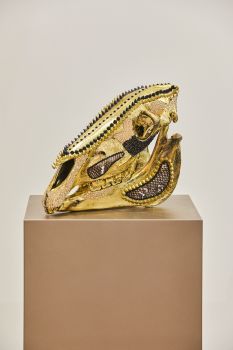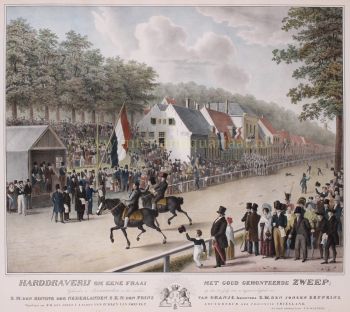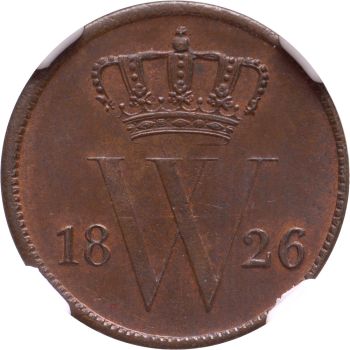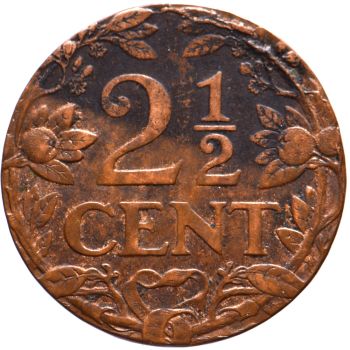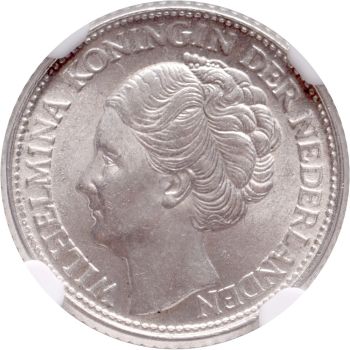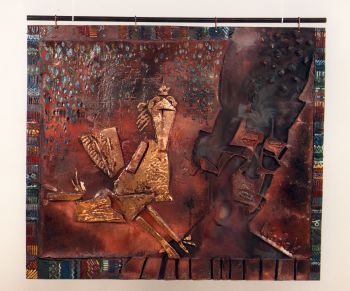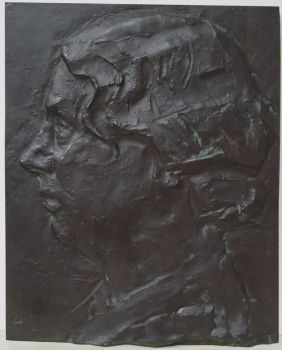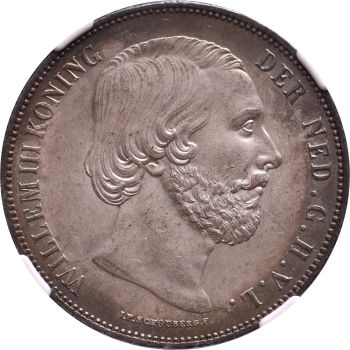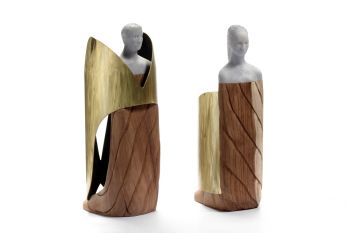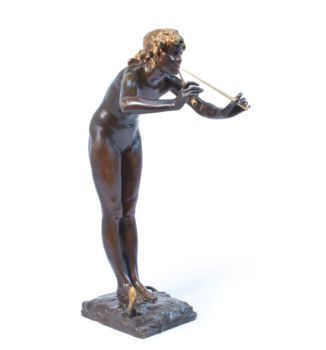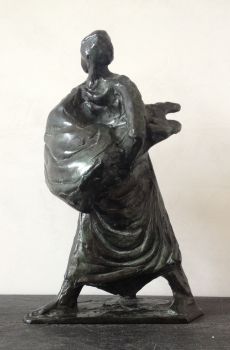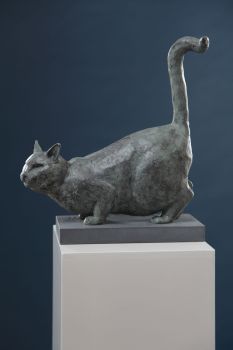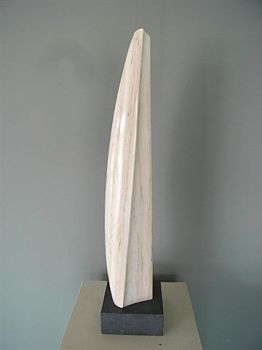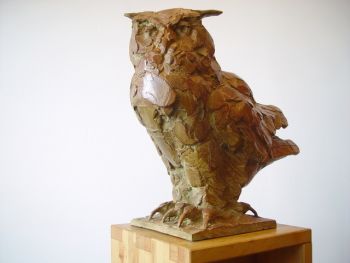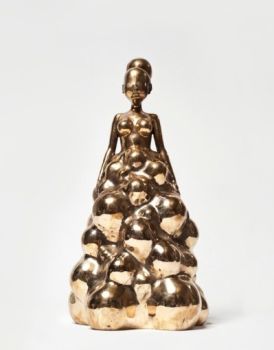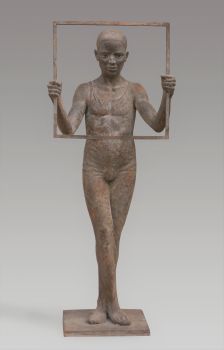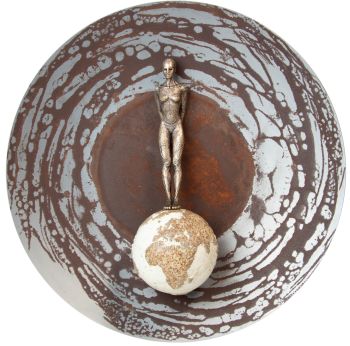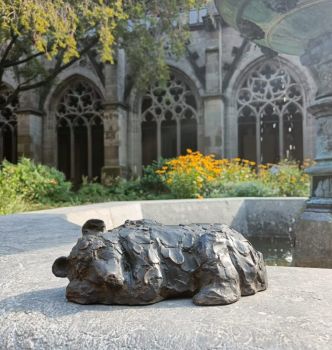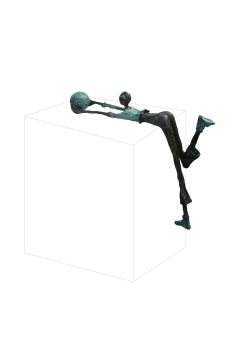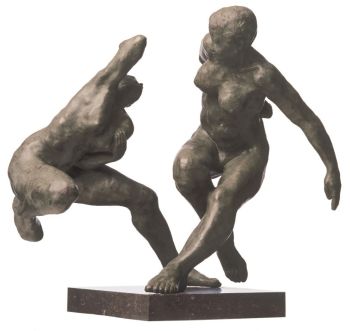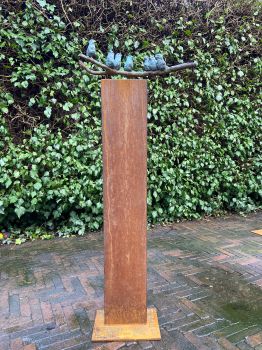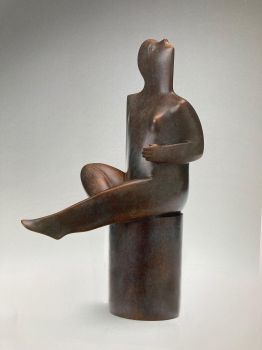French Louis XVI Portico Clock 1779 - 1781
Artista Sconosciuto
MarmoPietraBronzoMetalloSmalto
63 ⨯ 48 ⨯ 17 cm
Attualmente non disponibile tramite Gallerease
- A proposito di opere d'arteOn eight gilt bronze feet a moulded white marble plinth decorated with ormolu rosettes, panels and beaded bands. On the left and right on a slightly higher level and surrounded by ormolu posts, two high black marble bases support two inverted white marble fasces topped by ormolu armillary spheres. Between these bases a seated ormolu lion looks upwards towards the clock above. The clock is suspended from both the black marble bases as from the fasces. On top of the clock, on his own black marble base, an ormolu statuette of the Roman god Mars.
On the clock the white enamel dial shows three rings: the inner one with Arabic numerals for the date, the middle ring with Roman numerals for the hours and the outer ring indicates the minutes. Two pierced gilt brass hands for the hours and minutes and one steel pointer for the dates. The movement with anchor escapement and a duration of eight days. The pendulum disk in the form of an Apollo mask surrounded by the rays of the sun.
The ormolu decorations on the black marble bases consist of war trophies with scaled shields, quivers with arrows, halberds and flags, the whole topped by palm leaves as a symbol of victory. The very unusual inverted fasces are, even more unusual, topped by armillary spheres and moreover flank Mars, the god of war.
If this clock tells us something, it might be this: After the victories of war (trophies and palm leaves), man should bury his arms (inverted fasces) and concentrate on science and arts (the spheres).
After all, this clock was made in the age of reason when the purpose was to advance knowledge by scientific methods. Astronomy was one of the seven liberal arts (sciences) of the Renaisssance and astronomical discoveries concerning the moon, earth and sun were made around 1740-1770. These discoveries were being published by the French Académie des Sciences during the second half of the century.
The white enamel dial unsigned, but marked “à Paris”. - A proposito di opere artista
Può succedere che un artista o un creatore sia sconosciuto.
Alcune opere non sono determinate da chi sono state realizzate o sono state realizzate da (un gruppo di) artigiani. Esempi sono statue dell'antichità, mobili, specchi o firme non chiare o leggibili ma anche alcune opere non sono affatto firmate.
Inoltre puoi trovare la seguente descrizione:
•"Attribuito a …." A loro avviso probabilmente opera dell'artista, almeno in parte
•“Studio di ….” o “Officina di” A loro avviso un'opera eseguita nello studio o nella bottega dell'artista, eventualmente sotto la sua supervisione
•“Cerchio di…” A loro avviso un'opera del periodo dell'artista che mostra la sua influenza, strettamente legata all'artista ma non necessariamente al suo allievo
•"Stile di..." o "Seguace di..." A loro avviso un'opera eseguita nello stile dell'artista ma non necessariamente da un allievo; può essere contemporaneo o quasi contemporaneo
•“Modalità di…” A loro avviso un'opera nello stile dell'artista ma di epoca successiva
•"Dopo …." A loro avviso una copia (di qualsiasi data) di un'opera dell'artista
•“Firmato…”, “Datato…” o “Iscritto” A loro avviso l'opera è stata firmata/datata/inscritta dall'artista. L'aggiunta di un punto interrogativo indica un elemento di dubbio
•"Con firma....", "Con data...", "Con iscrizione..." o “Riporta firma/data/iscrizione” a loro avviso la firma/data/iscrizione è stata aggiunta da qualcuno diverso dall'artista
Artwork details
Related artworks
Artista Sconosciuto
Icona russa raffigurante una Deesis estesa1600 - 1650
Prezzo su richiestaKunsthandel H.W.C. Dullaert Icons
Artista Sconosciuto
Braccialetto di diamanti del XVIII secolo con intagli di 2000 anni1790
€ 23.000Adin Fine Antique Jewellery
 A cura di
A cura diDanny Bree
1 - 4 / 12Johannes La (le) Blanck
Un set di ampolle d'argento olandese a doppio uso1786
Prezzo su richiestaJacob J. Roosjen SRI
Reynier de Haan
Un'elegante coppa Monteith in argento olandese Luigi XVI1778
Prezzo su richiestaJacob J. Roosjen SRI
Johannes Schiotling
Un paio di candelieri olandesi in argento1784
Prezzo su richiestaJacob J. Roosjen SRI
1 - 4 / 7Artista Sconosciuto
UN RARO GRANDE TELESCOPIO GIAPPONESE IN PELLE LACCATA1750 - 1800
Prezzo su richiestaZebregs & Röell - Fine Art - Antiques
 A cura di
A cura diDanny Bree
Artista Sconosciuto
Japanese transition-style lacquer coffer 1640 - 1650
Prezzo su richiestaZebregs & Röell - Fine Art - Antiques
Artista Sconosciuto
UN CONTENITORE PER DOCUMENTI DELLO SRI LANKA IN ARGENTO DORATO19th century
Prezzo su richiestaZebregs & Röell - Fine Art - Antiques
Artista Sconosciuto
The Stamford Raffles Secretaires.1800 - 1813
Prezzo su richiestaZebregs & Röell - Fine Art - Antiques
1 - 4 / 24Reynier de Haan
Un'elegante coppa Monteith in argento olandese Luigi XVI1778
Prezzo su richiestaJacob J. Roosjen SRI
Artista Sconosciuto
Braccialetto di diamanti del XVIII secolo con intagli di 2000 anni1790
€ 23.000Adin Fine Antique Jewellery
 A cura di
A cura diDanny Bree
Lambertus Zijl
Portrait of Juliana, queen of the Netherlands (1948-1990)1900 - 1950
Prezzo su richiestaKunsthandel Pygmalion
Hubert Vos
Ritratto di un punjabi nell'India britannica1898
Prezzo su richiestaZebregs & Röell - Fine Art - Antiques
1 - 4 / 24- 1 - 4 / 24




